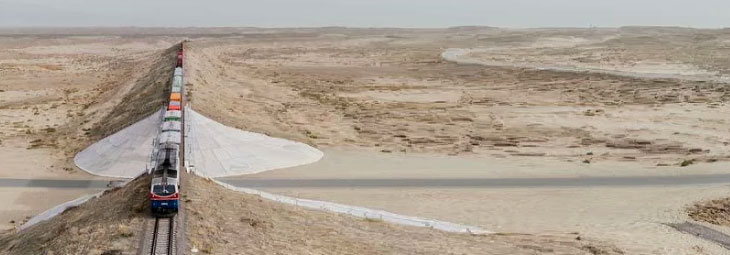


The global urban system and economic geographic pattern will witness big changes due to the Belt and Road Initiative, according to a top think tank at the Spring Forum of China City 100 Forum on May 16, 2017.
"The Silk Road will change and reshape the global urban system" said Ni Pengfei, a chief of urban studies at the Chinese Academy of Social Sciences. "Because the Belt and Road could effectively connect with the urban system."
Ni's team has researched the urban network along the Silk Road, whose population and economic aggregate both account for more than half of the world's overall volume.
The research team found the modern Silk Road has changed drastically in both population and economy. According to the night light picture taken by NASA from the space, which directly shows global economic development situations, regions with high economic development levels are focused in North America, Europe and East Asia nowadays. These three regions are also the centralized regions of population at present.
"Before 2050, most of the urban population will be in Asia, and Africa ranks second globally." said Wang Wen, executive director of the Chongyang Institute for Financial Studies at Renmin University of China.
These aggregations will result in the gradual formation of "the Silk Road urban network", as named by Ni's research group, which is "not so clear" but "will begin to take shape" according to Ni.
"The communication network of the roof of Asia is being reshaped by the Belt and Road Initiative," said Wu Liangyong, China's top architect and planner and the founder of human settlement science in China.
"The rise of India and Africa is a consensus of many authoritative research organizations globally", Ni said. "And we suppose these two regions will face a climax of urbanization due to the promotion of China."
"Particularly, we expect that cities along the Western coastal region of Africa will develop rapidly due to the Belt and Road Initiative", he added.
However, the central regions of the Silk Road, such as Central Asia, are economically underdeveloped compared to both ends of the Road. How to promote economic and social development in these regions is of great significance to the Belt and Road Initiative, considering its core spirit of joint development.
"Connectivity, especially infrastructure construction, is very important to connect the geographical centers that are far away from economic centers", said Li Guoping, head of the Beijing Development Institute at Peking University.